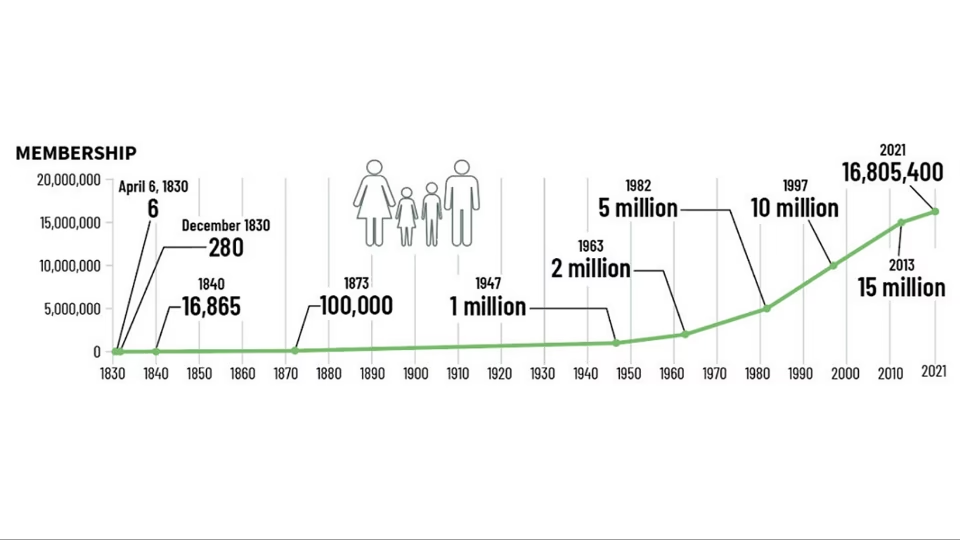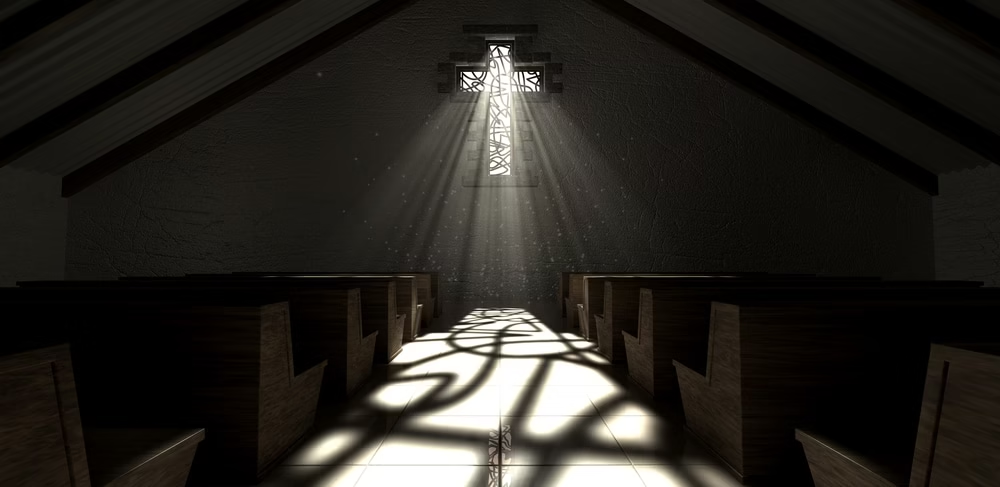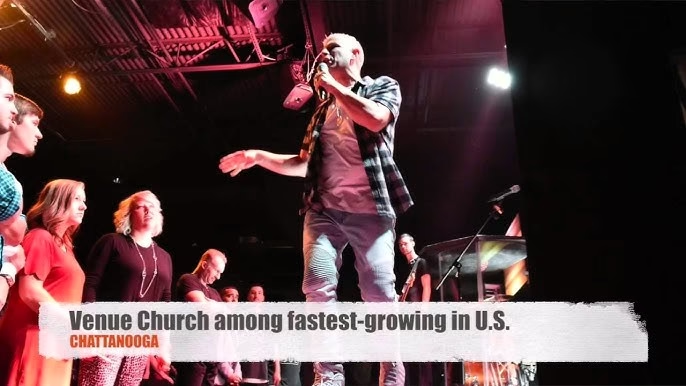The Fastest Growing Churches in the United State America: Trends and Insights
Introduction
In recent years, the landscape of Christianity in the United States has seen significant shifts, marked by the rise of rapidly expanding churches. These fastest growing churches are reshaping how faith communities connect, worship, and engage with society. Their growth reflects a combination of strategic leadership, innovative outreach, and responsiveness to cultural changes. Understanding the trends behind their expansion offers valuable insights into the evolving nature of American religious life.
This article explores the key factors driving this growth, the demographic and geographic patterns involved, and the innovative approaches that set these churches apart. By examining these elements, we can better appreciate how some churches are not only attracting large congregations but also fostering deeper community connections in an increasingly diverse and dynamic environment.
Overview of Church Growth in the United States

Church growth in the U.S. has been uneven over the past decades, with some denominations experiencing decline while others flourish. Factors such as cultural shifts, migration patterns, and changes in religious attitudes contribute to this variance. Recently, certain churches have seen remarkable growth, attracting thousands of new members annually. This growth often occurs in suburban and urban areas where changing demographics create new opportunities. The rise of non-denominational and evangelical churches, in particular, has been notable. These churches often emphasize contemporary worship styles, community involvement, and active outreach, setting the stage for their rapid expansion.
Defining “Fastest Growing” Churches
The term “fastest growing” typically refers to churches experiencing the highest rate of increase in attendance and membership over a specific period. This growth can be measured through various metrics such as weekly attendance, new member baptisms, or digital engagement. It’s important to distinguish between numerical growth and growth in spiritual depth or community impact. While many churches focus on expanding their numbers, the fastest growing congregations often balance quantity with quality by fostering meaningful relationships and spiritual development among members. Identifying these churches requires analyzing data across denominations, regions, and church sizes to understand what drives their rapid rise.
Key Factors Driving Church Growth
Several key factors contribute to the rapid growth of churches in the U.S. Effective leadership plays a crucial role, with visionary pastors inspiring and guiding their congregations. Additionally, churches that adapt to cultural trends by incorporating contemporary worship music, relevant sermons, and modern technology tend to attract younger generations. Strong community engagement, including outreach programs and social services, also helps churches build meaningful connections. Finally, a welcoming and inclusive atmosphere encourages newcomers to feel accepted and valued, fueling ongoing growth.
Demographic Trends Influencing Growth
Demographic changes have a significant impact on church growth. Many fast-growing churches are located in regions experiencing population increases, such as the Sun Belt states and growing urban centers. Younger generations, including millennials and Gen Z, are often drawn to churches that offer flexible, technology-driven experiences and authentic community connections. Additionally, immigrant populations have contributed to the growth of churches with multicultural worship styles. Understanding these demographic shifts helps explain why certain churches expand rapidly while others decline.
Geographic Hotspots for Growing Churches
Church growth is not evenly distributed across the U.S.; instead, it tends to concentrate in specific geographic areas. The South and Southwest, including states like Texas, Florida, and Georgia, are known hotspots due to their fast-growing populations and diverse communities. Urban and suburban regions in these areas often provide fertile ground for churches to expand. Conversely, some parts of the Northeast and Midwest see slower growth or decline. These geographic trends highlight the importance of local culture and population dynamics in shaping church expansion.
Role of Technology and Digital Outreach
Technology and digital platforms have become essential tools for church growth. Many of the fastest growing churches invest heavily in online streaming, social media, and mobile apps to reach wider audiences beyond their physical locations. Virtual services, podcasts, and interactive content allow churches to engage with people who may not attend in person. This digital presence also helps younger generations connect with faith on their own terms. By embracing technology, these churches create flexible, accessible worship experiences that support both growth and community building.
Innovative Worship Styles Attracting Members

One hallmark of rapidly growing churches is their use of innovative worship styles. These churches often blend contemporary music, multimedia presentations, and creative arts to make services more engaging and relevant. Interactive elements, such as live prayer sessions or small group discussions, foster participation and connection. This approach contrasts with traditional, formal worship services and appeals especially to younger attendees seeking a more dynamic spiritual experience. Such innovation helps churches stay culturally relevant while maintaining core religious values.
Impact of Leadership and Vision on Growth
Strong leadership is a critical factor in the success of fast-growing churches. Charismatic pastors and church leaders who clearly communicate a compelling vision inspire members and create momentum. Effective leaders prioritize community building, outreach, and spiritual growth, setting goals that encourage participation and commitment. They often empower lay leaders and volunteers, fostering a sense of ownership within the congregation. This leadership style not only drives growth in numbers but also strengthens the church’s long-term health and impact.
Community Engagement and Social Services
Fast-growing churches often prioritize community engagement and social services as part of their mission. By addressing local needs—such as food insecurity, homelessness, and education—they build strong ties with their neighborhoods. These outreach efforts not only demonstrate faith in action but also attract people looking for a church that makes a tangible difference. Volunteer opportunities and partnerships with local organizations help foster a sense of purpose and belonging among members, contributing to sustained growth and positive community impact.
The Role of Small Groups and Discipleship
Small groups and discipleship programs are vital components in many fast-growing churches. These intimate gatherings provide members with opportunities for deeper relationships, spiritual growth, and accountability. By breaking down large congregations into smaller communities, churches create environments where individuals feel supported and valued. Discipleship efforts help nurture faith development, encouraging members to live out their beliefs actively. This focus on connection and personal growth helps retain members and encourages new attendees to become fully engaged.
Case Studies: Examples of Fastest Growing Churches
To understand what fuels rapid growth, examining specific churches offers valuable insights. For instance, churches like Lakewood Church in Houston, Texas, and Elevation Church in Charlotte, North Carolina, have experienced exponential growth through dynamic leadership, multimedia outreach, and community involvement. These case studies reveal how innovative strategies, combined with clear vision and strong pastoral leadership, create environments conducive to expansion. Studying these examples helps highlight best practices that other churches might adopt to stimulate growth.
Challenges Faced by Rapidly Growing Churches
While rapid growth is exciting, it also brings challenges. Managing larger congregations requires more resources, staff, and effective organizational structures. Churches may struggle with maintaining a sense of community and personal connection as numbers increase. Additionally, balancing growth with spiritual depth can be difficult, risking a focus on quantity over quality. Fast-growing churches must also navigate cultural and societal changes while staying true to their core mission. Addressing these challenges is crucial for sustainable, healthy growth.
Future Predictions for Church Growth in the U.S.

Looking ahead, church growth in the U.S. will likely continue to be influenced by demographic shifts, technology, and cultural trends. The rise of digital ministry and hybrid worship models may expand outreach even further. Churches that remain adaptable, embrace diversity, and focus on authentic community are poised to thrive. However, ongoing societal secularization and changing religious attitudes may also present obstacles. Understanding and responding to these dynamics will shape the future landscape of American churches.
Conclusion
The fastest growing churches in the United States offer important lessons on how faith communities can adapt and thrive in a changing world. Through visionary leadership, innovative worship, technology use, and deep community engagement, these churches attract and retain members effectively. While challenges remain, their growth reflects a dynamic and evolving religious environment. By studying their strategies and trends, other churches can find inspiration and guidance for their own journeys of growth and impact.
You Can Also Read: Swingers Clubs in the United States
FAQS
What are 3 areas where the church is growing rapidly?
Christianity is growing at an unprecedented rate in several regions around the world, particularly in Africa, Latin America, and Asia, known as the Global South.
What is the fastest growing religion in the United States?
In the United States, the fastest-growing religious groups are those that are not traditionally Christian, with Hinduism and Islam being prominent examples. While Christianity remains the largest religious group in the US, some non-Christian faiths are seeing significant population growth.
What is the fastest growing church denomination in the United States?
According to various scholars and sources, Pentecostalism is the fastest-growing religious movement in the world; this growth is primarily due to religious conversion to Pentecostal and Charismatic Christianity. According to Pulitzer Center 35,000 people become Pentecostal or “Born again” every day.
What are the 5 pillars of church growth?
- Commitment to the Bible, 2) Commitment to prayer, 3) Everyone shares the Gospel, 4) Expectation of miracles and 5) Expectation of suffering. Allow me to reflect on these 5 pillars and make a few comments that are pertinent for us. 1) Commitment to the Bible.
What are the 7 main churches in the world?
According to Revelation 1:11, on the island of Patmos in the far east of the Aegean Sea, Jesus instructed John of Patmos to “[w]rite in a book what you see in your visions, and send it to the seven churches, to Ephesus, to Smyrna, to Pergamum, to Thyatira, to Sardis, to Philadelphia, and to Laodicea.” .
What is the biggest Christianity in USA?
Roughly 48.9% of Americans are Protestants, 23.0% are Catholics, 1.8% are Mormons (members of the Church of Jesus Christ of Latter-day Saints). Christianity was introduced during the period of European colonization. The United States has the world’s largest Christian population.

I have been surfing online more than 3 hours today yet I never found any interesting article like yours It is pretty worth enough for me In my opinion if all web owners and bloggers made good content as you did the web will be much more useful than ever before
Wow superb blog layout How long have you been blogging for you make blogging look easy The overall look of your site is magnificent as well as the content
Hello Neat post Theres an issue together with your site in internet explorer would check this IE still is the marketplace chief and a large element of other folks will leave out your magnificent writing due to this problem
Your blog is a constant source of inspiration for me. Your passion for your subject matter shines through in every post, and it’s clear that you genuinely care about making a positive impact on your readers.
[…] The Inkcarceration Festival in Ohio is a unique metal festival that blends heavy music with tattoo culture. It features a strong lineup of metal, hardcore, and punk bands, along with live tattooing, art vendors, and food trucks. This festival creates a community atmosphere where fans can celebrate metal music and alternative lifestyle culture together. Its distinct combination of music and tattoos makes it stand out among metal festivals in the United States. […]
[…] The United States flag has undergone many changes since its inception in 1777. Originally featuring thirteen stars and stripes to represent the original colonies, the united states flag evolved as new states joined the union. Each element—stars, stripes, colors—carries deep symbolic meaning: stars for states, stripes for unity, red for valor, white for purity, and blue for justice. Designed to represent a secular democratic republic, the flag avoids religious symbolism, reflecting the nation’s foundational principle of religious freedom. Understanding its evolution helps us better grasp how drastically the flag’s design might change under a religious government structure. […]